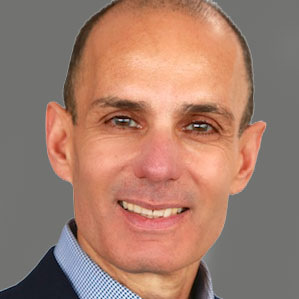Can you stop the Passive Aggressive behavior?
In most organizations, passive aggressive behavior is rampant, especially at the managerial levels.
Passive aggressive behavior occurs in an environment where people don’t feel they can express their true feelings and thoughts, especially the critical or negative ones. So, instead of communicating openly, authentically, courageously and effectively, people tend to pretend that everything is going well, even when in reality they feel irritated, upset and/or angry toward someone or about something that isn’t going well.
People communicate in a positive, politically correct and “respectful” way, even when inside, they feel the opposite. This dissonance creates tension and awkwardness. People feel they have to walk on eggshells around each other, which as we all know is stressful and exhausting.
Unfortunately, the negative impact of a passive aggressive environment goes beyond people walking on eggshells. People also become reluctant and afraid to push back on mission critical topics, address conflict, say what is on their minds or hold others accountable for behaviors and performance. In fact, people often say “yes” to things they don’t agree with for fear of receiving a bad reaction from their superiors, and then they pay lip service to important tasks and initiatives. As a result, productivity is compromised and results suffer. This predicament only perpetuates and increases the passive aggressive behavior, which caused it in the first place.
So, why are people passive aggressive?
Some people believe that passive aggressive behavior is ingrained in certain people’s personality, therefore they will always behave that way. I don’t believe that is the case. I think people behave in passive aggressive ways when they are ambitious and eager to succeed, and at the same time they don’t trust their ability to communicate effectively, or that others are big enough to handle their directness.
Think about it, if you trust your ability to communicate in any circumstance and people’s ability to listen and get it, you would feel quite confident, calm and centered even when dealing with big challenges and tight deadlines. You would feel enabled to express your true feelings, desires, commitments and even criticism in a direct and authentic way. If you hurt people’s feelings you could always clean it up.
But, if you don’t trust your ability to communicate effectively, especially in tense or uncomfortable situations when you need to convey criticism and disagreement, or you fear that if you expressed your frustration and anger, it may get out of hand, or you may get into trouble with your superiors or teammates – how would you behave?
Now, add to that the fact that no one feels comfortable to come out and admit “I don’t trust my ability to communicate” or “I don’t trust that you will handle it.” So, instead of expressing your authentic feelings you could easily pretend that everything is ok. Or you would suppress your true feelings, water down your communication or hold back all together, even if in reality you may want to kill someone.
Pent up emotions, frustrations, and unexpressed communications are like bottled energy. Eventually, they have to be released. The more they stay bottled up, the more likely they are to explode when triggered. Unfortunately, this often happens at the most inappropriate times, in the most unproductive ways. When we “lose it,” it usually creates damage beyond proportion.
So, how do you stop this?
Given that passive aggressive behavior lives as an issue of communication, you have to transform it in the realm of communication. This will take authentic leadership, ownership, commitment, and courage.
If leaders are too afraid to be vulnerable, or they don’t trust themselves to create a more powerful and authentic environment of communication around them, or they are simply too caught up in the passive aggressive behavior themselves, nothing will change. In fact, they will continue to be a part of the problem.
They will most likely hide behind their title and authority in order to control conversations and avoid hearing bad news or criticism, especially about themselves. By doing so, they will perpetuate the issues and drive their team to more passive aggressive behavior.
However, if leaders commit to creating an open, honest environment for communication where people can authentically and directly communicate and express their views, even if things may get a bit messy before they get better, they can stop the passive aggressive behavior and transform it into something more nurturing and productive.
Leaders can create a more powerful environment, and everyone can develop their skills and confidence at communicating effectively. You just need to know that this will take time and it has to start at the top.





Leave a Reply
Want to join the discussion?Feel free to contribute!